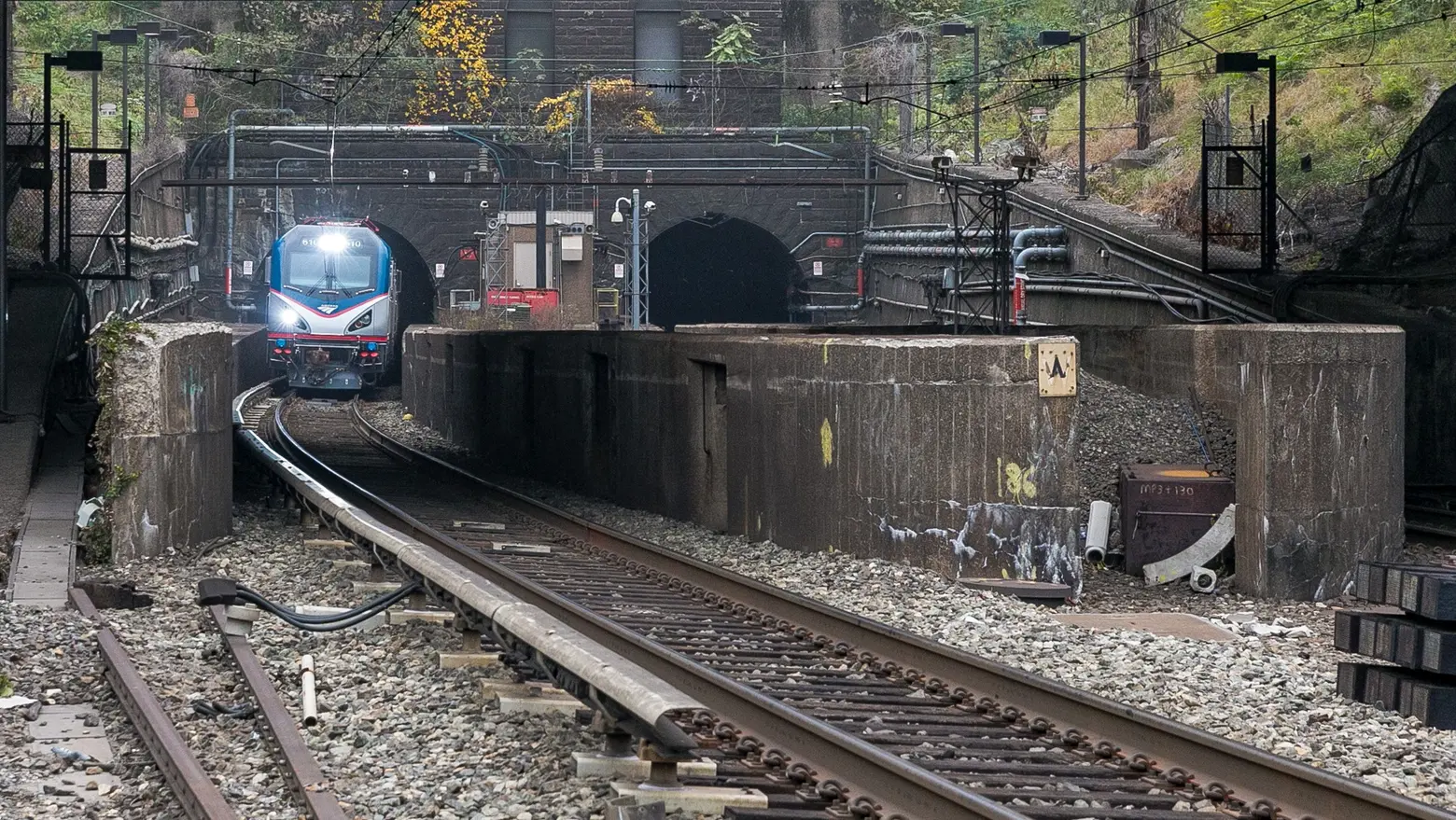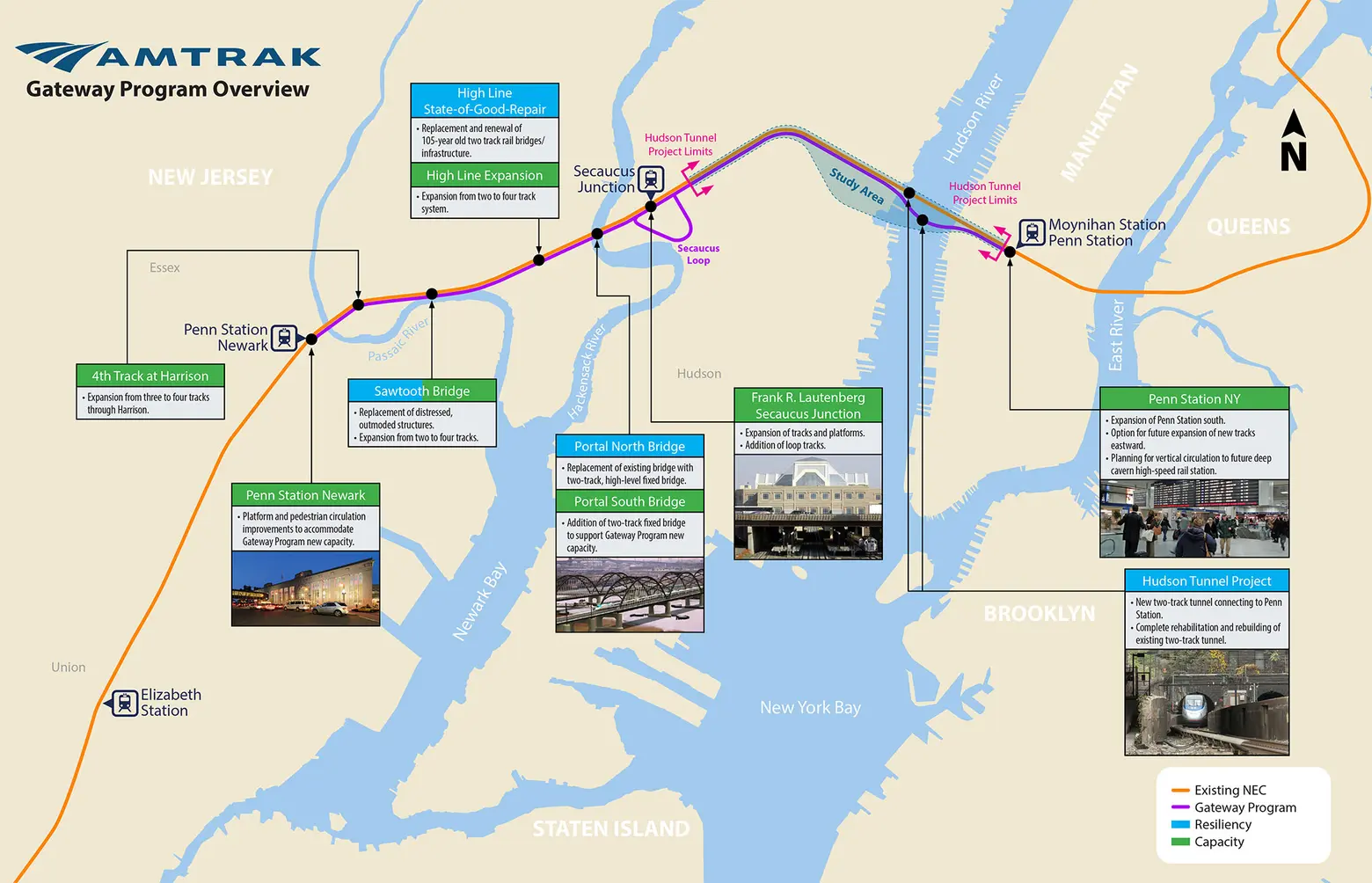Amtrak’s Hudson River tunnels project could bring 3 years of traffic jams

Back in January, Amtrak unveiled its $24B Gateway Program, a plan that would overhaul the Hudson River rail tunnels by building a brand new tunnel and repairing another that is currently in disrepair. Work under the plan would also encompass expanding Pennsylvania Station in Manhattan and replacing rail bridges in New Jersey. While details on the course of construction were previously thin, according to draft proposals obtained by Reuters, we now know that work on the new tunnel will begin in 2019, and the West Side Highway could be subject to three years of traffic jams as a result.

As 6sqft previously reported, the most crucial component of the Gateway is the estimated $7.7B Hudson Tunnel Project that will bring a new two-track tunnel into Penn Station station and rebuild an existing, century-old tunnel. The existing tunnel was damaged during Superstorm Sandy and continues to erode as saltwater residue clings to the interior. What’s more is that irrespective of the damage, ridership has grown tremendously over the last 30 years, and the existing setup is unequipped to handle increased demand. The Regional Plan Association has called the Hudson River tunnels “the biggest bottleneck in the metro region’s transit network, causing delays that ripple up and down the northeast corridor.” Shoring up infrastructure is imperative, and as Reuters writes, “The Gateway project is considered critical to the greater metropolitan New York City area, which produces 10 percent of the country’s economic output.”
The draft proposals was obtained from a transportation sector source by the news outlet and lays out various plans for construction. One scenario details digging up a partially renovated section of the Hudson River Park using a “cut and cover” method, a move that would lead to lane closures on the busy West Side Highway and limit access to the park. Also noted is stabilizing the ground for boring, as parts of Manhattan are on landfill; as is building a massive underwater encasement that would rise from the riverbed to protect the tunnel from things like anchors and grounded ships. Work in the water could take two years and encompass 224,000 square feet (or four football fields in size), which would also impact the Hudson’s marine life.
The plans outlined in the drafts, however, have in no way been finalized and are meant to identify the least desirable construction scenarios—a common measure taken for large-scale public projects. The proposals will ultimately be incorporated into an environmental impact statement to be released in 2017. Nancy Snyder, a spokeswoman for NJ Transit, who is leading the environmental review, told Reuters: “We are going through this process to see what is the best way to construct the tunnel with the least amount of impact to everyone involved.”
Last September, it was decided that New York and New Jersey would cover half the cost of the Gateway Program, and federal officials the other half through a separate entity within the Port Authority of New York and New Jersey. Amtrak says it will take a decade to complete the entire project.
[Via Reuters]
RELATED:




























